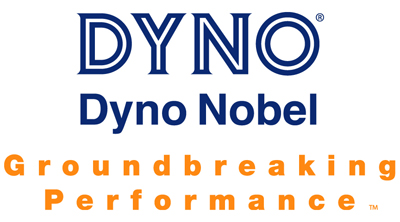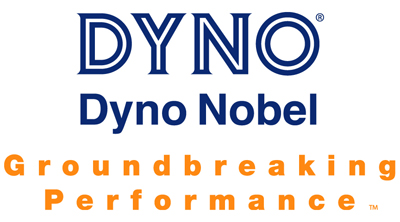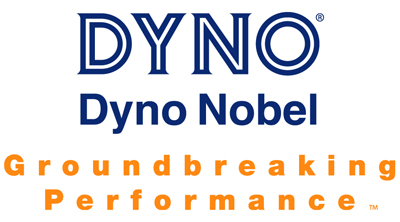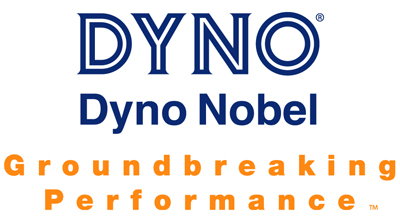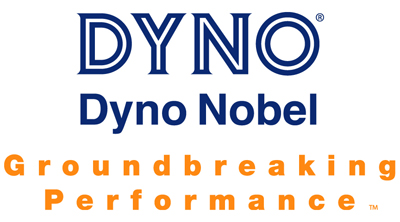Title Page
-
Audit Title
-
Client / Site
-
Audited on
-
Audited by
-
Location
Level 1 Audit – Drilling and Blasting On Bench Activities
-
Instructions
1. Answer the questions below with the most appropriate response by either "Yes", "No"or "Partial".
2. Add photos and notes by clicking on the paperclip icon
3. To add a Corrective Actions, click on the paperclip icon then "Add Action", provide a description, assign to a member, set priority and due date
4. Complete audit by providing digital signature
5. Share your report by exporting as PDF, Word, Excel or Web Link
Activity 1.1 SAFETY
-
1.1.1 Has a take-5 or similar review been undertaken prior to the audit commencing? <br><br> Ensure take 5 or similar is conducted before commencing audit
-
1.1.2 Are the correct authorizations obtained before any work on the blast commences?<br><br> Ensure all aspects of the blast has been considered and approved prior to work commencing
-
1.1.3 Is there an emergency procedure for the site?<br><br> Sight site Emergency Management Plan.<br> Does the EMP reference Magazines, on bench, bulk storage, depots, explosives and bulk vehicles?
-
1.1.4 Are first aid kits available?
-
1.1.5 Are eyewash stations available and clean?<br><br> Can be fixed stations or portable eyewash containers?<br> Eyewash water should be temperature controlled
-
1.1.6 Is PPE available and being worn correctly?
-
1.1.7 Are MSDS Sheets available for all chemicals and products being used?<br><br> All personnel working on blasts should know the location of MSDS sheets. Are MSDS sheets up to date/current?
-
1.1.8 Are blasts inspected for unsafe conditions prior to work commencing?<br><br> Undercut or cracked edges on bench, rough ground. Are any identified unsafe zones demarcated adequately?
-
1.1.9 Are there adequate controls on personnel entering the blasting work zone?<br><br> Refer mines regs. All personnel should be authorized to access explosives, or be under the supervision of a competent, authorized person.
-
1.1.10 Is the bench checked for misfires prior to drilling commencing?<br><br> Refer Mines Regs<br> Must ensure that drills do not drill into butts
-
1.1.11 Are pit walls inspected prior to work being carried out below?<br><br> Do catch berms have catch capacity or are they full?<br> Are loose rocks in the vicinity of the work area?<br> Are there overhangs above the work area?<br> Is there a history of wall failures in this area of the pit?<br> Is a spotter required while personnel are working in certain areas?
-
1.1.12 Fire fighting<br><br> Are the personnel trained in the use of fire extinguishers?<br> Are there adequate fire extinguishers and are they effectively located?<br> Are the personnel trained in general and explosives specific fire fighting procedures?<br> Are the fire extinguishers accessible, charged and have current inspection tags?
-
1.1.13 Blast Pattern Demarcation<br><br> Is the blast pattern adequately demarcated before work commences?<br> Is there a demarcation standard for blasting areas?<br> Windrows between blasting area and any haul routes<br> Are windrow heights suitable for size of equipment driving past?<br> Is windrow built prior as part of pattern preparation?<br> Is signage installed on bench below blast to avoid overdigging into blast zone?<br> Are no dig tapes installed to stop dig units overdigging into the blast area?<br> Area demarcated before any explosives are laid out?<br> Is the entry to the blasting area controlled/adequate?
-
1.1.14 Are shotfirers appointed with record in the mines record book?<br><br> Sight appointment letters. Appointments should include authorised to deal with misfires.
Activity 1.2 DRILLING OPERATIONS
-
1.2.1 Has the drill site been properly prepared for drilling and blasting activities?<br><br> Area graded and suitable for personnel on foot etc.
-
1.2.2 Is there a drilling plan for every blast?<br><br> How are holes depths established? How are they controlled?<br> What is the format of the drilling plan?<br> How is information relayed back to the blast engineer regarding compliance to plan?
-
1.2.3 Who creates the drill pattern design (D&B Eng, shotfirer, other)?
-
1.2.4 Who sets out drill patterns?<br><br> Are holes marked out by surveyor?<br> Are all holes marked or guide holes and tape measure?<br> Are patterns checked for accuracy before drilling commences?
-
1.2.5 Do drills have a guidance system on board (GPS)?<br><br> What type of drill guidance is being used?<br> Is the system accuracy checked by survey point on every pattern?
-
1.2.6 Do holes have individual numbers?
-
1.2.7 Do holes have individual depths assigned?<br><br> If no hole depths assigned, how do drillers compensate for highs/lows on the bench?
-
1.2.8 Do drillers allow for fallback when drilling?<br><br> If so, how much fallback is expected for each hole?<br> How often is fallback checked?
-
1.2.9 Do drillers dip holes to ensure all are to correct depth before leaving drill pattern?<br><br> Are variation limits set to guide drillers when a redrill or backfilling needs to occur?<br> Who authorizes the movement of drills to perform redrills?
-
1.2.10 How are redrills performed (Reaming original hole, drilling new holes)?
-
1.2.11 Are failed holes (or other holes such as exploration holes) backfilled prior to blasting?<br><br> Open holes can allow venting during the blast, resulting in flyrock or excessive airblast<br> Open holes can create trip hazards for personnel on foot
-
1.2.12 Does a Standard Operating Procedure exist for the drilling equipment?<br><br> Has this procedure been developed at the mine or provided by manufacturers?
-
1.2.13 Are abnormal conditions in drill holes documented on drill reports?<br><br> Sight drill reports for the pattern<br> Does the report show weak or hard bands, voids etc?
-
1.2.14 Are rock recognition parameters recorded during drilling and fed back to the blasting engineer?<br><br> Pulldown and rotation rates, penetration rates etc.
-
1.2.15 Are all drill holes surveyed prior to blasting?<br><br> Records of hole location should be kept in case of misfires, to check actual burdens, and for spacing the holes in adjacent blasts.
-
1.2.16 Are patterns checked to ensure adequate holes have been drilled?<br><br> Does shotfirer check to ensure sufficient blast holes to make blast effective?
-
1.2.17 Drill hole quality control checks<br><br> Are holes dipped post drilling?<br> Are holes dipped prior to holes being primed and charged?<br> Are holes backfilled if too deep?<br> What is the action plan for holes which are too short?<br> How are wet holes identified?
Activity 1.3 Explosives Handling
-
1.3.1 Are all handlers of explosives authorized or under the supervision of authorized handlers?<br><br> All personnel with access to explosive should be trained and authorised by the site
-
1.3.2 Are site explosives training standards in place?<br><br> Have all handlers of explosives been trained to site standards?
-
1.3.3 Are explosives being used to manufacturers recommendations?
-
1.3.4 Is due care being shown when handling explosives?
Activity 1.4 Site Explosives Transport
-
1.4.1 Are explosives and detonators adequately separated during transport around the mine?<br><br> Explosives and detonators in separate compartments<br> No non-explosive materials present in boxes.
-
1.4.2 Are explosives left in the vehicles unattended during breaks?<br><br> Are there approved parking areas for vehicles?
-
1.4.3 Are the storage boxes locked during transport?
-
1.4.4 Does vehicle signage comply with Australian Standards? <br><br> Are the correct placards displayed and visible on all four sides?<br> Does the site require high vis markings on the vehicles? <br> Are all lights and back up alarm in working order?
-
1.4.5 Are MSDS sheets available for all goods being transported
-
1.4.6 Are the transport boxes fully lined with non-sparking material
-
1.4.7 Does a Standard Operating Procedure exist for this equipment
-
1.4.8 Is there a pre-start inspection book and are the inspections being carried out.
Activity 1.5 Storage Magazines for Explosives and Detonators
-
1.5.1 Signage to Aust Standards (Licence number, Explosives signs, capacity)<br><br> Eg word EXPLOSIVES must be on all magazines in 150mm red lettering (regardless of HE or DET mag)
-
1.5.2 Magazine rules posted inside magazine<br><br> door mat in place, broom etc
-
1.5.3 Are magazines capacities posted on the door of the magazine?<br><br> Capacity is now part of mag licence number which should be posted on the door
-
1.5.4 Are magazine licenses current?<br><br> Sight licences, check capacities correct and current
-
1.5.5 Are magazine door hinges correctly located?<br><br> Are locking plates installed to avoid pins riding up allowing door to fall off? (refer orange hazard number)
-
1.5.6 Explosives and detonators correctly separated
-
1.5.7 No unauthorized items stored in magazines
-
1.5.8 No radios or telephones taken into magazines - signs posted
-
1.5.9 Are magazine sites cleared of flammable materials as per Aust Standards?<br><br> site properly cleared of underbrush and debris
-
1.5.10 Are the magazines kept orderly and clean?
-
1.5.11 Are boxes stacked correctly (height, air gap behind)?<br><br> Stacked no higher than 2m and air gap of 25mm around the walls NEED TO CHECK IF AIR GAP IS SPECIFIED IN REGULATIONS
-
1.5.12 Is stock rotation being adequately managed?<br><br> Don't assume new stock being delivered is younger than current stock in magazine.
-
1.5.13 Are records kept of all stock placed into and taken out of magazines?<br><br> Up to date, are stocktakes done regularly, what is the procedure for dealing with stock discrepancies?
-
1.5.14 Has an individual or individuals been appointed as magazine keeper?<br><br> Sight appointment letters for magazine keeper
-
1.5.15 Are magazines locked when unattended?<br><br> Are door locking equipment in compliance with applicable regualtions? (Eg - key can't be removed unless locked)
-
1.5.16 Are magazine fences locked when unattended?<br><br> Are fences in good condition and marked with appropriate signage? (Eg. no smoking, no radio/phones, no matches)
-
1.5.17 Are magazines properly grounded and earthed?<br><br> Has site electrican tested earthing of magazines and if so what Ohmns reading recorded?
-
1.5.18 Are magazine keys locked away when not in use?<br><br> Does the site have a Key control policy including a key lock box?
Activity 1.6 Priming Blast Holes
-
1.6.1 Is there a site standard for priming blast holes?<br><br> Is site standard followed by personnel priming holes?
-
1.6.2 Are holes primed as per manufacturers recommendations?<br><br> Explosives laid out carefully at each hole<br> Explosives laid out carefully at each hole<br> Downlines secured at top of hole<br> Primer located off bottom of hole
-
1.6.3 Is top or bottom priming used?<br><br> Are blast crew aware of hole charging plan and ensure primer location is suitable for that plan?
-
1.6.4 Are wet holes clearly marked?<br><br> Wet holes need to be identified so that the charging operation can be completed in the appropriate manner
-
1.6.5 Is deck loading used on site?<br><br> Are primers correctly inserted for every deck?
-
1.6.6 If primers are removed from holes, are the detonators separated from the booster?<br><br> Dets should be removed from booster. If grit prevents easy separation of detonator, then assembly should be placed into an adjacent hole so that it cannot be run over.
Activity 1.7 Charging Blast Holes
-
1.7.1 Is there a SOP for this task?<br><br> Are the blastcrew familiar with the SOP?
-
1.7.2 Is there a site standard for charging blast holes?<br><br> Is site standard understood and followed by personnel charging holes?
-
1.7.3 Is there a charging plan for every blast and/or every blast hole?
-
1.7.4 Are hole numbers identified on the ground to allow for blast pattern orientation?<br><br> How are holes checked to ensure the correct charge is being loaded?
-
1.7.5 Are abnormal conditions identified prior to charging?<br><br> Voids, reactive ground, wet holes, short holes
-
1.7.6 Does the shotfirer adjust hole charge for incorrect face burdens?<br><br> Reduce risk of face burst/flyrock
-
1.7.7 Are charge truck movements on the blast controlled by a spotter/offsider?<br><br> Charge trucks should have a spotter present when reversing, changing rows, or where movement or vision is restricted in any manner
-
1.7.8 Is a reverse alarm fitted and working on the charge truck?
-
1.7.9 Are explosives QC checks being performed and recorded?<br><br> How often are checks done on density, product weights (bucket weights), gassing rates, fuelling rates etc?
-
1.7.10 Is charging being conducted to a stemming height or KG per hole?
-
1.7.11 Are stemming heights/kgs per hole being checked regularly?<br><br> Stemming length checked using tape or pole
-
1.7.12 Are primers checked prior to charging to ensure they are free from bridging in the hole?
-
1.7.13 Are primers pulled into pumped blends to ensure they are in a good quality product?<br><br> Primers must be pulled into pumped product after charging to ensure the primer is not sitting in mud or water voids at the bottom of the charge column
-
1.7.14 Is there a system to monitor that all holes in the pattern are charged, and that only the holes which are to be fired are charged? <br><br> Refer Mines Regs, holes not planned to be fired in the blast must not be loaded.
-
1.7.15 Are procedures in place to deal with dropped downlines during charging?<br><br> What is the procedure for a dropped downline? Is this procedure known by all blast crew members?<br> How often does this occur? Are instanced investigated?
-
1.7.16 Are wet blast holes charged from the bottom of the hole?<br><br> Are procedures available for charging wet holes?<br> Observe wet hole loading to ensure charging is conducted correctly.
-
1.7.17 Is dewatering carried out prior to charging blast holes?<br><br> If so, is recharge rate checked.<br> Is all water removed from hole? If not, wet hole charging procedure must be used.
-
1.7.18 Is the charge design modified to suit unusual conditions such as insufficient face burdens etc?
-
1.7.19 Is there a procedure to deal with overloaded blast holes? <br><br> Removing explosives, increasing blast clearance zone etc
-
1.7.20 Is the downline adequately secured to prevent loss while charging?
-
1.7.21 Are any uncharged holes left primed overnight? <br><br> If holes are not charged, is the pattern guarded overnight to ensure explosives are not removed?
Activity 1.8 Stemming Blast Holes
-
1.8.1 Was adequate time allowed for product to finish gassing before stemming the blastholes? <br><br> Was the gassing rate of the product checked during QC checks, and stemming height monitored for an adequate period before stemming commenced?
-
1.8.2 What type of stemming is used? <br><br> Aggregate, drill cuttings. Is it angular or rounded, considered suitable for hole sizes
-
1.8.3 Is there a site standard for stemming blast holes?
-
1.8.4 Is the site standard for stemming being followed?
-
1.8.5 Are stemming machine movements on the blast controlled by a spotter/offsider?<br><br> Is the stemming machine able to fit between rows, or does it straddle loaded blast holes? Are downlines secured so as to not become entangled on the stemming machine.?
-
1.8.6 Is a reverse alarm fitted and working on the stemming machine?
-
1.8.7 Is the downline adequately secured to prevent loss while stemming?<br><br> How is the downline secured? Is there a procedure for lost downlines while stemming?
-
1.8.8 Is there a procedure for dealing with slumped holes after stemming?
Activity 1.9 Blast Tie-in
-
1.9.1 Were all unnecessary materials and equipment removed prior to tie-in commencing?
-
1.9.2 Are tie in plans created for each blast?<br><br> Who designs the tie in plan for the blast?<br> Are tie in plans created from survey pickup or designed hole locations?
-
1.9.3 Are tie ins checked against design before firing?<br><br> Are variances/changes recorded and reported for feedback into design process?
-
1.9.4 Is a specific person given responsibility for controlling tying in of blasts?<br><br> The shotfirer should ensure all blast crew are familiar with the tie-in plan before work commences. Shotfirer should insert control row to ensure correct placement and orientation.
-
1.9.5 Are products being used according to manufacturers recommendations?<br><br> EZTL's clipped properly, det cord tied at right angles.
-
1.9.6 Are surface ties correct length for pattern dimensions?<br><br> Surface connector lines should not be to taught and suspended off the ground, nor should they be too loose and left coiled near detonators (shrapnel)
-
1.9.7 What type of surface initiation system being used (Electric, Nonel, Electronic, det cord)?
-
1.9.8 Are checks done post tie in to ensure all holes have been connected and correct delays have been used?<br><br> Are 3rd man checks done?
-
1.9.9 Does the shotfirer ensure that no persons enter pattern after tie in hole check has been completed?<br><br> The shotfirer should be the last person to leave the pattern after he has checked the tie-in and connected the lead in line to the first hole to fire.
Activity 1.10 Firing Blasts
-
1.10.1 Notifications of firing times<br><br> Firing times must be agreed by the Registered Manager for the mine<br> How are personnel notified of blasting times at the mine? (eg boards, email, pre-shift meetings etc.)
-
1.10.2 Identification of clearance zones<br><br> Does the SOP state the minimum/normal distances, are maps provided, are entry points identified, was flyrock seen to project beyond the clearance zone?
-
1.10.3 Blast area clearance procedures<br><br> Does and SOP exist, understood, are written records kept of each blast fired, procedures for blast guards, communications, sirens, roadblock signage, clearance routes, audible warning (radio tone etc)?
-
1.10.4 Is the blast recorded?<br><br> Video, vibration, overpressure, VOD etc<br> Are blast videos reviewed by D&B engineers and blast crew on a regular basis?
-
1.10.5 Blast area clearance procedures<br><br> Does and SOP exist, understood, are written records kept of each blast fired, procedures for blast guards, communications, sirens, roadblock signage, clearance routes, audible warning (radio tone etc)?
-
1.10.6 Firing procedures<br><br> Does and SOP exist, understood, are written records kept of each blast fired?
-
1.10.7 Blast initiation<br><br> Are lead-in lines used according to manufacturers recommendations, are remote firing units in a safe location?
-
1.10.8 Is stemming retention monitored?<br><br> Is there evidence of ejection during blasts?
Activity 1.11 Re-entry After Firing
-
1.11.1 How are the blast re-entry checks performed?<br><br> Are blasts walked entirely or checked from the perimeter of the blast? Are site conditions considered?
-
1.11.2 Were fumes and dust allowed to dissipate prior to re-entry to blast area?
-
1.11.3 Do misfire procedures exist at the site and are they understood by shotfirers?<br><br> Sight procedures and sign off sheets if they exist
-
1.11.4 Are shotfirers trained and appointed in identifying and dealing with misfires?<br><br> Sight appointment letters
-
1.11.5 Was the all clear given prior to people leaving road block positions?
Activity 1.12 Post Blast Reporting
-
1.12.1 Are blast reports created for every blast?<br><br> Who completes the blast reports?
-
1.12.2 Where are the blasting reports filed?<br><br> Blast reports should be readily accessible by the blast engineer to facilitate feedback into the blast design process<br> Are blast reports kept electronically?
-
1.12.3 What information is recorded on the blast reports?<br><br> Basics should include Shotfirers name, date fired, time fired, number of holes, total quantities of explosives, actual powder factor, tie in sequence used, and comments about blast performance including flyrock, face burst, fuming, stemming ejection, oversize, backbreak, etc
-
1.12.4 Is oversize identified and recorded? <br><br> Where is the information kept, is the information relayed back to the blast engineer, how is this information used in new blast designs?
-
1.12.5 Are blast boundaries surveyed?<br><br> Are design versus actual tonnages or volumes measured to determine actual v design powder factors?
-
1.12.6 Is there a method for feedback of unsuitable blast results into the blast design process?
-
After completing this section, please proceed to the next section.
Level 2 Audit – Blast Design Process
Blast Design Process
-
2.1.1 How many drill and blast designers/engineers are employed to design blasts at the mine?<br><br> Is there sufficient coverage and resources to provide and adequate level of service to the mine?<br> What is the average experience of the design personnel?<br> What level of detail is given to the blast design process?
-
2.1.2 Are patterns offset from the bench above to avoid drilling into butts?<br><br> Where possible blast holes should be offset so that drillers do not drill into butts. This will also reduce the amount of broken ground from previous subdrill which the drill has to collar through?
-
2.1.3 Are blast reports for adjacent blasts reviewed to help determine parameters for current design?<br><br> Are surrounding blasts actively reviewed prior to designing adjacent blasts?
-
2.1.4 Are surveyed blast boundaries for blasts already fired used to determine blast block shapes for future designs?<br><br> Are blasts laid out according to burden from previously designed row of holes or from face burden?<br> Are face burdens checked and within suitable limits?
-
2.1.5 How are blasting blocks defined?
-
2.1.6 Bench heights<br><br> Are the bench heights compatible with drilling and mining equipment being used on the site?
-
2.1.7 What is the desired outcome fo the blasts?<br><br> Cast blasting, low muck for loader, high face for shovel etc
-
2.1.8 Is the choice of dig unit known prior to the blast being designed?
-
2.1.9 Is the tie-in created once choice of dig unit is known?<br><br> Are tie-ins modified to suit loaders, shovels or excavators?
-
2.1.10 Are medium and long term schedules created using blast blocks?<br><br> How much influence does the scheduling process have on the design of blasting blocks?
-
2.1.11 Are blasting boundaries created to optimise blasting results?<br><br> Are blast orientated to use geology, free faces, blast out of corners, achieve maximum throw etc?
-
2.1.12 Are blasts boundaries commonly changed due to production requirements?<br><br> Are blasts cut off early, joined together, modified in the field. Who authorises field modifications?
-
2.1.13 Are blasts reconciled for actual versus design volumes?<br><br> Volume or tonnage variances should be identified so that more accurate predictions can be made in the future
-
2.1.14 Is dig rate data analysed and variances from plan investigated?
-
2.1.15 How is the front row face burden determined?<br><br> Is a face row burden set or modified to suit face angle/height etc?<br> Is the face row burden modified for irregular faces?
-
2.1.16 Are standard designs created for final walls and agreed by geotechnical dept?
-
2.1.17 What is the final wall design angle?<br><br> What is the batter angle?
-
2.1.18 Are there geological/geotechnical boundaries dictating final wall blast designs?<br><br> Do designs vary to suit hard/soft ground, or ground with major jointing influence or areas of instability?
-
2.1.19 Are variances between design and actuals investigated?<br><br> Check variances in hole diameter, charge weights etc
-
2.1.20 Does the mine have a systematic blast design process?<br><br> What software is used for the design, are procedures written for the design process, are blast masters created for each bench?
-
2.1.21 Who signs off on blast designs prior to them being issued?<br><br> Geology, geotech, mine planning, underground personnel etc
-
2.1.22 How are blast design parameters determined?<br><br> Drill hole size, depth, subdrill, burden, spacing, are previous blast results checked and results fed back into the design process
-
2.1.23 How are the charge parameters determined?<br><br> How is the choice of explosives determined, collect copies of previous blast designs?
-
2.1.24 How are the tie-in parameters determined?<br><br> What delays are used for each blast?
-
2.1.25 Are trim/limits blasts fired separately or as part of modified production blasts?<br><br> What is the standard number of rows in a trim blast?<br> Are rows of holes parallel or perpendicular to the wall?<br> What hole sizes are drilled in limits blasts compared with standard?
-
2.1.26 Are limits blasts fired to a free face?
-
2.1.27 Is presplitting conducted on site?<br><br> How are presplit areas identified. Are presplits fired in advance of any other blasts in area?
-
2.1.28 Are blasting movement monitors/indicators used at the site?<br><br> What procedures are in place to monitor movement?<br> Are ore boundaries modified according to movement monitor pickups?
-
2.1.29 Are orebody models used to help determine pattern sizes and explosives selection at the site?<br><br> Is adequate geological and geotechnical data available in orebody models to assist the drill and blast engineer with selection of powder factors and explosives selection prior to the pattern being drilled?
-
2.1.30 Ground hardness<br><br> What is the average hardness of the rock being blasted?<br> Is the rock hardness uniform across the blast?<br> If rock hardness changes, is the explosive's energy increased to suit?<br> How are changes in hardness identified in the field?<br> Are hardness figures shown in orebody modelling at the site?
-
2.1.31 Bedding<br><br> What is the direction and angle of the bedding. Does this change across the ore and across the pit?<br> Does bedding interfere with ability to free face blasts?<br> Are blasts oriented to fire across bedding to maximise breakage?
-
2.1.32 Jointing<br><br> Are joints dipping out of the walls?<br> Do joints create wedges that could fail in berms?<br> Are joints filled with loose material or recemented?<br> What is the average joint spacing?
-
2.1.33 Ore boundaries<br><br> Are ore boundaries well defined or irregular? Do ore boundaries create dilution if fired in particular directions?
-
2.1.34 Wall conditions<br><br> Is there evidence of wall instability?<br> Are failures visible in current pit walls on a batter, berm or wall scale?<br> Is wall or crack monitoring done on site on a regular basis?<br> Is wall condition checked after each blast is dug off and results fed back into the blast design process?
-
2.1.35 What is the smallest effective blasting block to suit geology?
-
2.1.36 Are blasts orietated perpendicular or parrallel to prinicple ore direction?
-
2.1.37 Are block polygons shifted to account for blast movement?
-
2.1.38 What type and number of drills are used on site?
-
2.1.39 What is the minimum and maximum holes sizes that can be drilled with each drill type?
-
2.1.40 Is the drill capable of drilling angled holes?<br><br> What is the angle drilling capabilities of the drill rig?<br> Is angle drilling done on a regular basis?
-
2.1.41 Drill capacity (rotary or DHH)<br><br> What are the expected production rates of each drill type?
-
2.1.42 Vibration Limits<br><br> Are vibration limits predicted for each blast?<br> Is vibration measured at the site?<br> Is vibration liable to cause concern for nearby infrastructure, public buildings or housing?<br> Is vibration lilkely to damage to pit walls or underground mines in the area?
-
2.1.43 Airblast Limits<br><br> Are airblast limits set for the site? Is infrastructure in the area which could be affected by airblast such as public housing?
-
2.1.44 Dust Concerns from Blasting<br><br> Is dust monitoring conducted for hazardous materials? (Asbestos etc)
-
2.1.45 Flyrock Concerns/Controls<br><br> Are blasts designed to ensure flyrock is contained within the blast clearance zone?<br> Are there any buildings or facilities near the blasting area which could be affected by flyrock?
-
2.1.46 Is there evidence of NOX after the blast?<br><br> Are instances of NOX investigated to determine causes?<br> Are NOX procedures available at the site?<br> Are there procedures in place to deal with NOX inhalation?
-
2.1.47 Is explosive charge designed to a stemming height or KG per hole?
-
2.1.48 How is the powder factor for each blast determined/planned ?
-
2.1.49 How is the success or failure of a blast measured?
-
2.1.50 How are blast records kept at the site?
-
2.1.51 Is there a defined process for reviewing previous blasts during the blast design stage?
-
2.1.52 Are records kept of key blasting result parameters (dig rates, oversize, toe, bucket fill factors etc)?<br><br> Where are the records kept?<br> Are the records available electronically?<br> Who is responsible for collecting and sorting the records?
-
2.1.53 Is there evidence of cratering or excessive surface displacement and mixing in ore blasts?
-
2.1.54 Is there evidence of excessive back break on blasts?
-
2.1.55 How is the front row face burden determined?<br><br> Is face pick up used, or standard burden from previous row of holes?
-
After completing this section, please proceed to the next section.
Level 3 Audit – Blasting Results Review
Blasting Results Review
-
3.1.1 How are dig rates captured?<br><br> % dozer time per blast, dig rates per machine, dig rates per day/month etc
-
3.1.2 Is dig rate data analysed and variances from plan investigated?
-
3.1.3 Are standard designs created for final walls and agreed by geotechnical dept?<br><br> Are standard designs documented and agreed by all parties?<br> Are reviews undertaken on final wall quality and the review fed back into the design process?<br> Are large areas of damage or toe visible on the walls?
-
3.1.4 What is the final wall design angle?
-
3.1.5 Are other blast performance parameters measured?<br><br> Heave, backbreak, flyrock, fume etc
-
3.1.6 Does the muckpile flow to the shovel during digging?<br><br> Observe whether rock is rilling easily to the shovel or standing up
-
3.1.7 Is the fragmentation measured or optimised for leaching efficiency and effectiveness?
-
3.1.8 How are secondary breakage requirements monitored?<br><br> How are oversize issues fed back into the blast design process?<br> Are rockbreaker hours recorded?<br> Are secondary breakage costs monitored?
-
3.1.9 Does the bucket fill in a single smooth pass?
-
3.1.10 Is there evidence of toe in the bench floors?<br><br> Is subdrill sufficient?
-
3.1.11 Is there evidence of overdigging of the bench floors?<br><br> Is subdrill too long, is there difficulty in collaring drill holes on bench below?
-
3.1.12 Are final wall assesments done by the geotechnical dept on a regular basis, and this information used for future blast designs?
-
After completing this section, please proceed to the next section.
Level 4 Audit – Blasting Downstream Impact Review
Blasting Downstream Impact Review
-
4.1.1 Are there previous technical investigations on blasting which have been conducted at the site?<br><br> Have any recommendations been made, have they been implemented?
-
4.1.2 Does the mine use heap leaching?<br><br> Have any studies been undertaken on the mine to determine optimum fragmentation for ore which is to be heap leached?
-
4.1.3 What is the optimum fragmentation distribution for the crusher size?<br><br> It is highly unlikely that this number will be easily accessible?
-
4.1.4 What is the maximum rock size that the crusher can handle?<br><br> What is the impact of oversize on the crushing rate?<br> How many oversize boulders are cleared from the crusher per day/hour?<br> What is the main impact of oversize on the crusher?<br> How often to trucks queue at the crusher?
-
4.1.5 What proportion of oversize is produced at the mine?<br><br> What is the effect of the oversize on production? (Eg does the oversize require breakage in the pit, does it report to oversize after the primary crusher, does it require rehandle on the ROM.)<br> Is the cost of oversize measured at the mine?
-
4.1.6 How is the proportion of oversize measured?
-
4.1.7 Is the ore blended into the crusher or directly fed from mining blocks?
-
4.1.8 What is the crusher throughput rates? <br><br> What are the actual and nameplate rates of the crushers?
-
4.1.9 What crushing systems are in use at the mine?<br><br> (Eg Primary, secondary, tertiary)
-
4.1.10 What type of grinding/milling circuits are in use?
-
4.1.11 What type of recovery is in use at the mine?<br><br> Flotation, heavy media, cyclone, CIL,
-
4.1.12 What type of ore is recovered and processed in the plant?
-
4.1.13 What is the average production rates of the plant compared to nameplate capacity?
-
4.1.14 Are recoveries above or below expectations?
-
4.1.15 Is power consumption measured to crushers, grinding and process circuits?
-
4.1.16 What is the proportion of drill and blast cost in the overall production costs?
-
4.1.17 What are the top 2 currently identified bottlenecks in the processing plant?
-
4.1.18 Is the mine producing finished products or concentrates?<br><br> What type and amounts of products are being produced?
-
4.1.19 What is the budgeted production output from the mine?<br><br> Total movement, ore to plant, finished product (eg gold oz)
-
4.1.20 Are costs measured accurately for each discreet process?
-
4.1.21 Does the mine have a model for the process plant to show the effect of changing fragmentation on crushing and processing rates?
-
4.1.22 Is the price of the final product influenced by the blasting effort?<br><br> Lump Iron ore for example attracts a premium price, so higher blasting effort decreases revenue by destroying lump into fines. Coal is also affected as fines increases.
-
4.1.23 Does the mine have data on baseline (current) fragmentation, throughput, recovery rates?
-
4.1.24 What is the current availability of plant and equipment at the site?<br><br> All mobile equipment and process plant availabilities etc.
-
4.1.25 Are ore stocks blended to suit recovery circuit throughput or budget grades?
-
4.1.26 Are fleet capacities capable of increasing workload if plant capacities/throughputs change?<br><br> Drilling, charging, digging, haulage, crushing, milling, recovery, processing, finished product capacities
-
4.1.27 Is there frequent meetings between mine and mill personnel to discuss requirements and results?
-
4.1.28 Does the crusher have any system to measure fragmentation?
-
4.1.29 Which is the hardest domain to crush?<br><br> Is this domain blasted differently?
-
4.1.30 Have studies been conducted on steepening inter-ramp angles in the pit - decreasing strip ratio through enhanced final limit procedures at the mine?
Audit Completion
-
Auditor's Name and Signature






